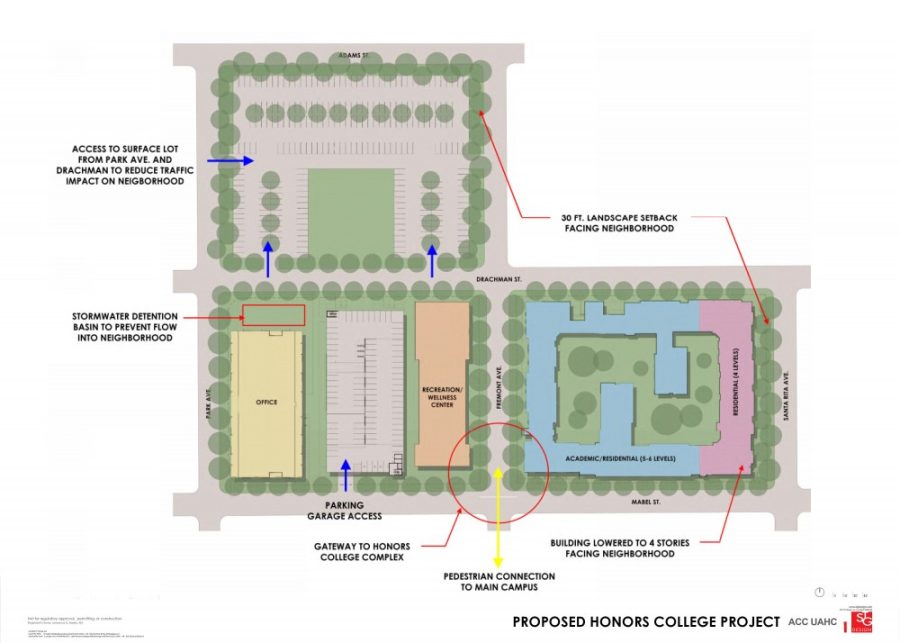The UA is going to lose a huge part of its culture with the construction of the new honors complex: the integration of the honors college into the UA community.
This is essential for several reasons, not the least of which is that the UA’s current style contrasts with Barrett, the Honors College at Arizona State University’s Tempe campus. If the UA builds a similar complex, Arizona in-state students will lose their choice between an integrated honors college experience and a non-integrated one and will be subjected to a more isolated feel.
When I was still in high school, I was set on going to ASU. I had the opportunity to tour all three in-state universities, so I visited ASU, and I decided to check UA out. I was surprised to find I liked the UA more than I liked ASU, and a major part of that decision was the difference in the honors college facilities.
Barrett was pretty off-putting. I felt isolated once I stepped through the gates at the entrance. The atmosphere was artificial, and there seemed to be an air of superiority created through the separation of the honors students from the rest of campus.
Honors students spend a large portion of their time in Barrett, and I had heard students at Barrett were often disliked by the rest of ASU because they weren’t a part of the greater community.
Related: Community concerned about trust and credibility of UA in development of new honors complex
The separation did not make sense to me. The real world does not separate the “good test takers” from everyone else. In the real world, students categorized as honors students are integrated with everyone else.
The UA better-reflected the honors college experience I was looking for. During the tour, the honors college emphasized being integrated into campus. During my college experience, I have found this to be true. The difference in culture is great. I can tell anyone I am in the Honors College and people do not look at me negatively for saying so. Honors students are truly part of the UA campus.
In my first semester, I had an honors colloquium on the third floor of the education building. As soon as I stepped out of class, I was immediately surrounded by the entire mix of university students. It felt natural, because after all, I was a university student like everyone else.
However, the proposed honors complex creates a facility similar to Barrett at ASU. It will be a “village” with its own dining hall, recreation center, classrooms and dorms. The new complex will inevitably separate honors students from the rest of the campus community.
When the prospected location is input into Google Maps, it will take just as long for the future honors students to walk to Fry’s on Grant Road as to Old Main (18 minutes). Honors students won’t make the trek to campus, nor will non-honors students visit the honors complex unless they really need to.
Related: New Honors College village under debate
There is nothing wrong with someone preferring Barrett over the UA’s current model. It really is a matter of personal preference. However, building a Barrett-type complex here will disregard people who aren’t looking for an all inclusive honors college experience.
According to US News, the UA is ranked 124 out of all of the colleges in the country, while ASU is 129. Though we are ahead, the difference in academic experience is minimal. Both universities have high-ranked programs in different areas. The real difference between the two is the atmosphere.
If the Honors College changes the feel of the program on campus, it could affect preferences in the two universities. Having a similar complex in both universities homogenizes the feel and takes away one of the characteristic parts of the UA campus.
There should be a discussion within the Honors College as to what honors students value in the current layout rather than deciding what is valued for us. I benefited greatly from having the choice between the drastically different Barrett and UA Honors College, and I know many others would say the same.
Follow Toni Marcheva on Twitter









